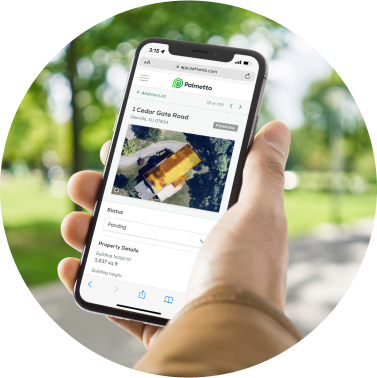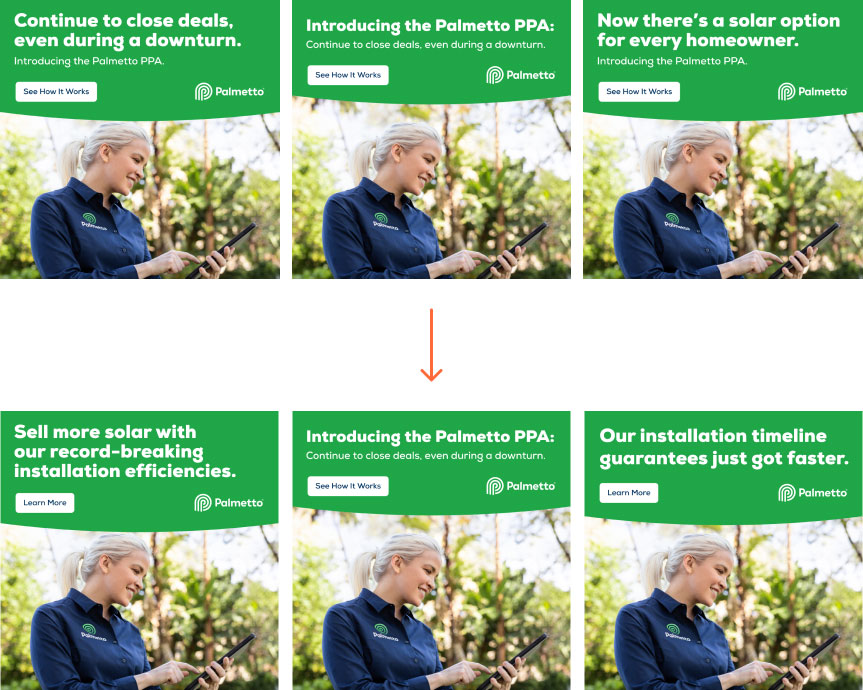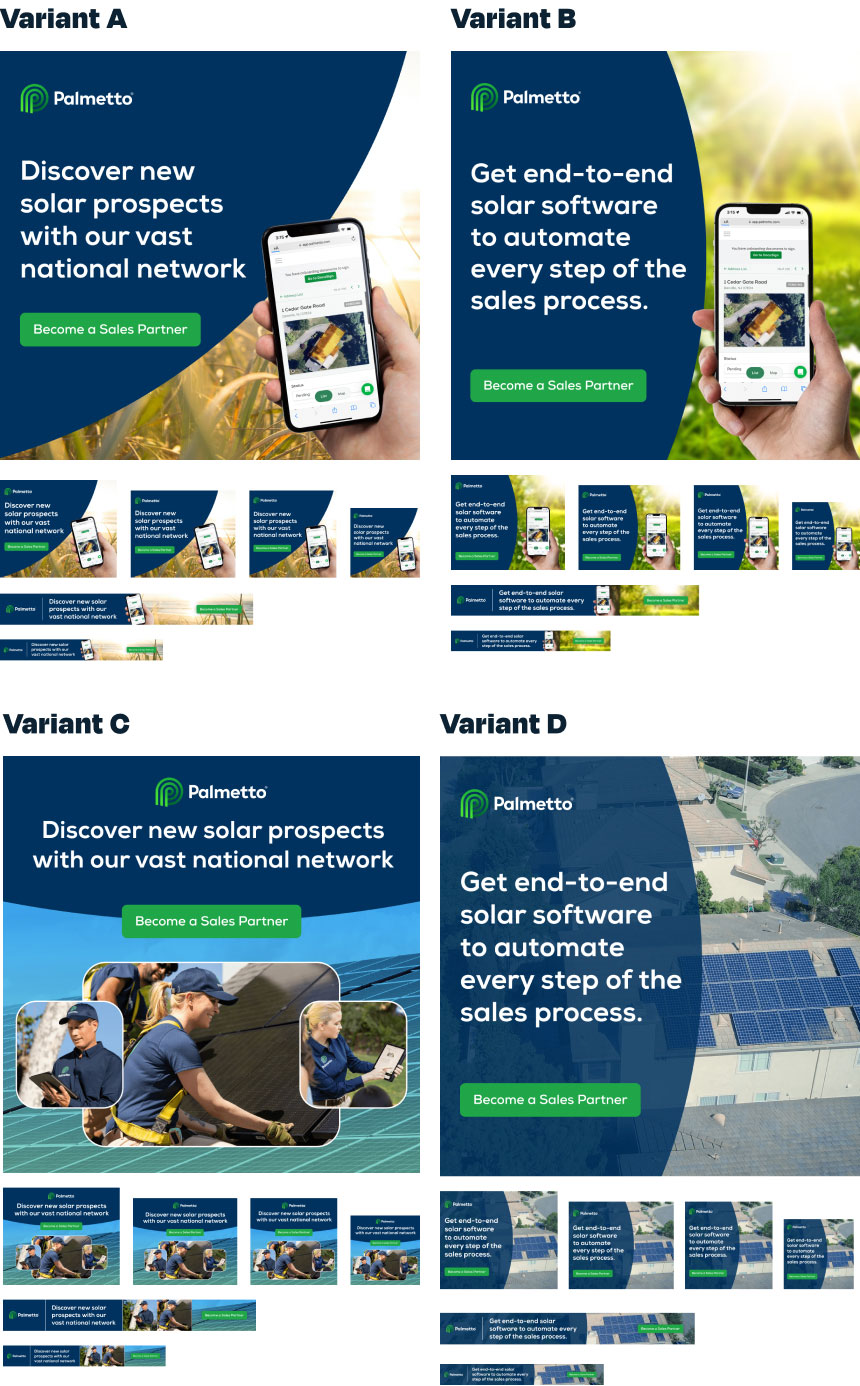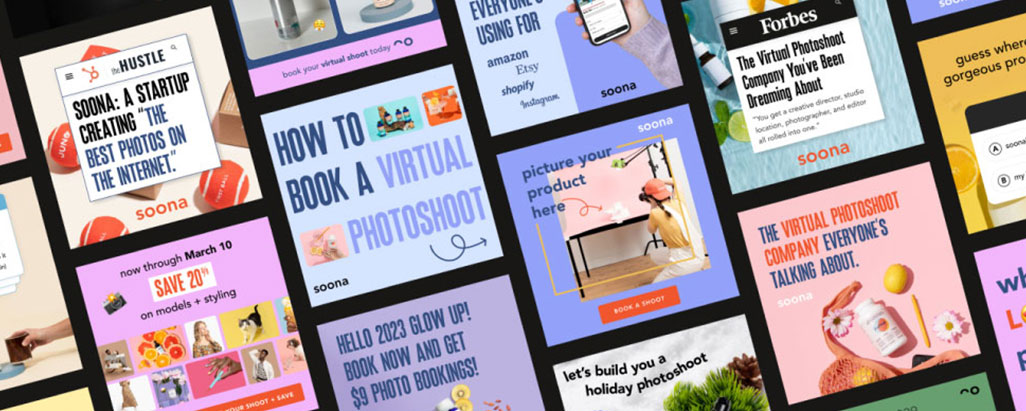We started working with Palmetto in March 2023. To get started, we conducted extensive research to pinpoint their target audience and determine the right mix of demand generation and capture tactics that would enable us to successfully generate the desired results.
Once we deeply understood their target audience (i.e., experienced solar sales representatives), we created value propositions to serve as the foundation for our strategic testing framework – applying this messaging to paid social ad creative and landing page copy.
In tandem, we worked to identify the right growth channels to reach this audience. We zeroed in on interests and behaviors within Meta’s ad platform, as well as contextual videos and channels that closely matched their ideal customer profile to reach new audiences on YouTube.
We then turned to Google Search. Our PPC team built a small but mighty list of ideal keywords that only the target audience would search for. While it didn’t have a large monthly search volume, we were confident that a smaller list of highly relevant terms would be more impactful than a longer list of broad, less relevant keywords with more volume.
Lastly, we used the Salesforce Data Connector to blend pipeline data with ad campaign data to rely less on paid attribution models and create our own view of the paid and non-paid customer pipeline generated.
Within three weeks, we had a new user flow, measurement system, creative, and ads live on four different channels: Search, Meta, YouTube, and Display.
We used the initial results from paid tactic performance, website testing via Google Optimize, and creative performance to develop a creative optimization framework to scale results by isolating key variables of a creative asset to identify winning and losing strategies.
- Identify the target audience, their pain points, and motivations.
- Develop hyper-specific, sticky messaging strategies to attract and convert leads.
- Assemble a tactical and agile media plan to validate multiple channels quickly.
- Implement channel-specific creative with multiple demand-generating and demand-capturing tactics and aligned user flows.
- Analyze the data to extract key performance indicators beyond platform data
- Optimize the tactics, keywords, and creative that drove conversions, not just leads.
After four months of testing, here’s what we found ↓








